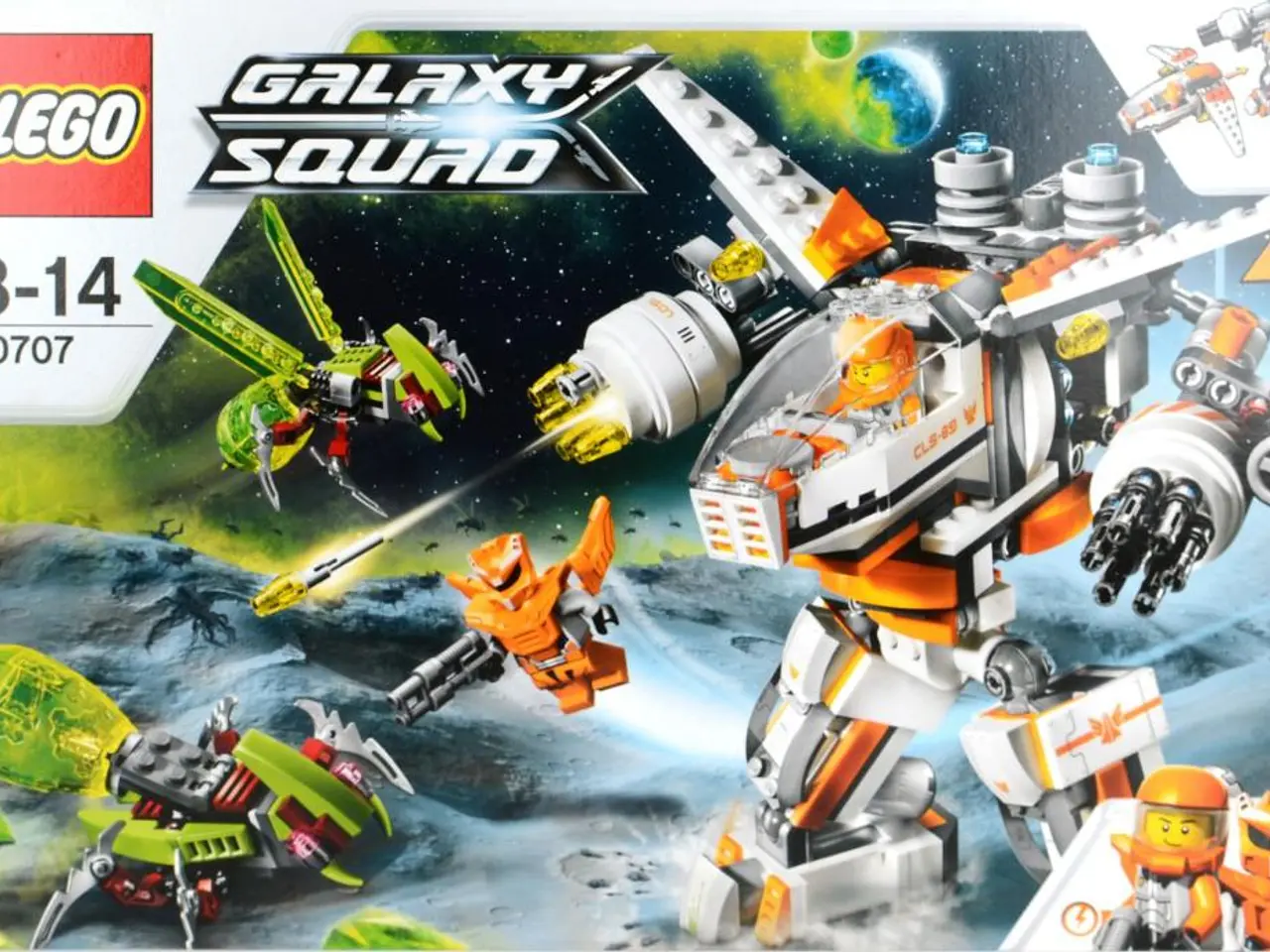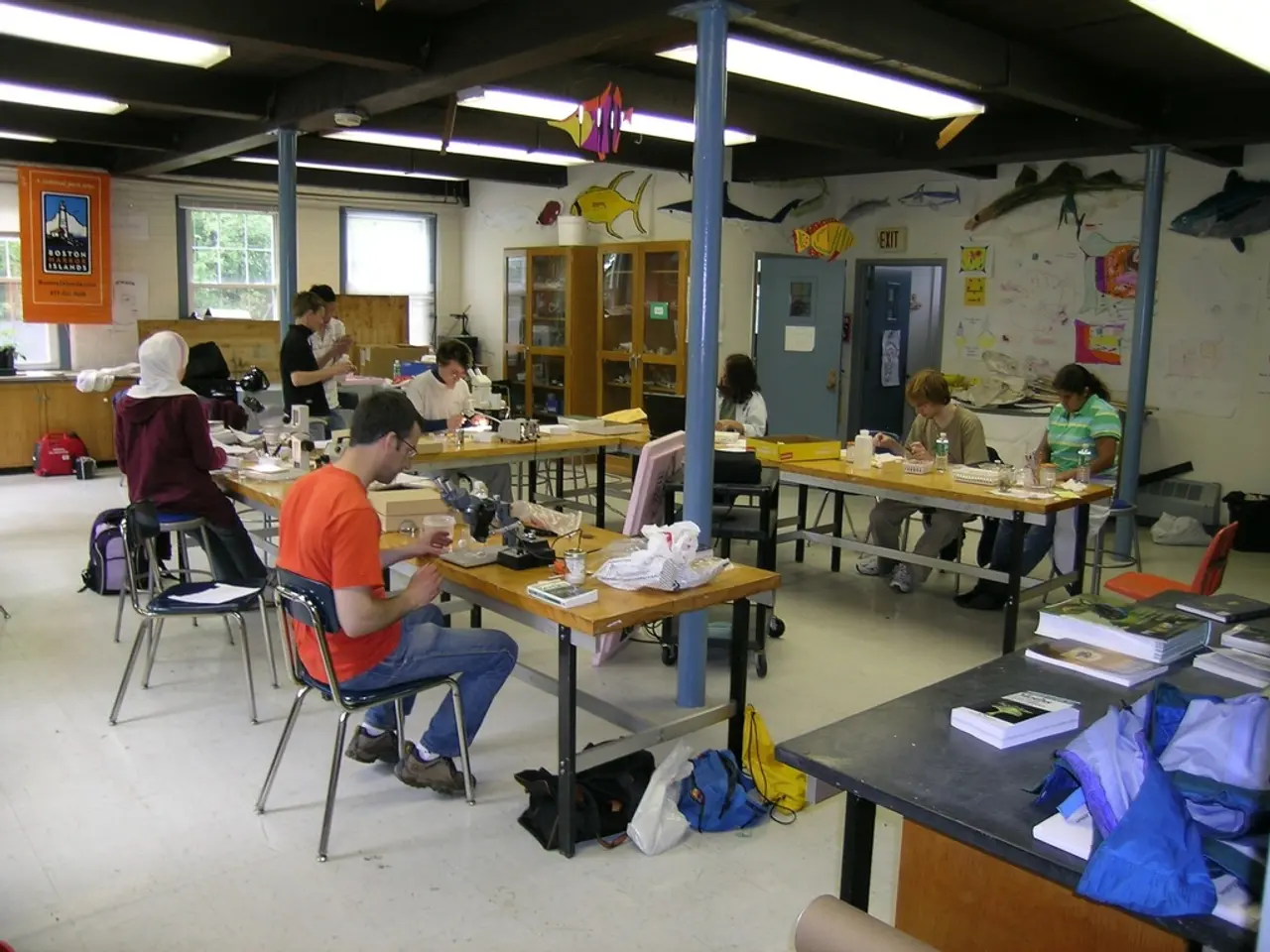Assembling a mechanical symphony ensemble
Robot Orchestra Set to Debut in Manchester
Professor Danielle George MBE is set to unveil a unique and innovative project: a robot orchestra made up of 50 robots built by people in the North West. The grand performance will take place at the opening ceremony of the Euro Science Open Forum on 24 July, following the orchestra's first rehearsal on 24 June.
The robotic instruments range from traditional ones like violins, glockenspiels, and xylophones, to more unconventional ones such as floppy disk drives and old desk fans. Some of the robots were created during a Hack Day, where almost 200 primary and secondary school children built music-making robots in the Great Hall at the University's Sackville Street Building.
The robot orchestra is part of the European City of Science celebrations, aiming to inspire interest and engagement in science, technology, engineering, and mathematics (STEM) through an innovative blend of robotics and music. This project builds on George's work from the 2014 Royal Institution Christmas Lecture titled "How to Make a Robot," where she demonstrated the accessibility and fun of robotics, particularly for young audiences.
The orchestra will showcase the creative and technical possibilities of robotics, with robotic arms and automated instruments performing music. The project also ties into UK Robotics Week, a national initiative celebrating robotics technologies and their impact.
Steve Pickett, Education Director at the Hallé Orchestra, has composed a special piece of music for the robot orchestra launch and will provide eight professional musicians to perform live alongside the robots. Siemens is building a special robot conductor named 'Graphene' to keep the other robots in time.
The robot orchestra project is a Citizen Science project that reuses discarded machines and technology. It aims to inspire people to use their skills to solve some of the big global challenges we all face. The project also encourages everyone to discover the secret engineer inside themselves and build an amazing machine from their imagination.
After its debut in Manchester, the robot orchestra project plans to tour across the country with the support of the Royal Academy of Engineering. The project aspires to get more people tinkering and making, and to encourage them to think about where being involved in such a project can take them. It's a more ambitious version of a pilot version that was assembled for the 2014 Royal Institution Christmas Lecture titled "How to hack your home."
Professor Danielle George MBE has been awarded the 2016 Royal Academy of Engineering Rooke Award for public promotion of engineering. The project intends to explore how a city can re-engineer its old 'stuff' and spread environmentally responsible good practice through music and performance. The robot orchestra project aims to make children realize that they don't have to choose between the arts and science, as it's called engineering.
A new Robots exhibition is planned by the Science Museum for 2017, providing an opportunity to learn more about the fascinating world of robotics. The robot orchestra project serves to inspire future generations by demonstrating the practical applications of robotics in an engaging and artistic manner, making complex technology approachable. It also highlights the UK's leadership in robotics innovation during major science events such as the European City of Science and UK Robotics Week, reinforcing the importance of STEM education and interdisciplinary collaboration.
Science and education-and-self-development are intertwined in the robot orchestra project, which aims to inspire interest in science, technology, engineering, and mathematics (STEM) among children. The project, part of the European City of Science celebrations, was kickstarted during a Hack Day at the University's Sackville Street Building, where over 200 primary and secondary school children built music-making robots. Furthermore, the project encourages people to discover the secret engineer inside themselves and build an amazing machine from their imagination, ultimately suggesting that the arts and science are not mutually exclusive, but rather can be combined to create innovative and engaging solutions.



